The extra mile is the new exhibition of Galeria Nicodim, although in this case the works of Cristian Răduţă do not follow the formal logic of the ex-position: the space of the gallery rejects its display function, which differentiates the artistic production from its institutional mechanism, becoming a moment and part of the installation. This form of spatial articulation can also be identified in the direction of Sandwich Gallery (the artist is a founding member) that asserts and extend the mark of improvisation-statement in its operational status.
Environment, a natural museum of contra-factual history, a teleological representation of the animal kingdom, theatre or show all intersect in Răduţă’s artistic and curatorial project that proposes an incredible (fable) fabul-ation of the animal world. Contextualized by the artist as a cross between two regimes of existence (immanent/ transcendent) the wall separating the space of the gallery displays the whole mise en scène showing the ontological difference right in the moment of transgression: the giraffe who looks stunt or curious over the wall; an animal whose body is halfway beyond (the finish line/ wall) looking at the deity or its representation; a herbivore is caught in full elongation while approaching at the other end of the wall; the kangaroo on the other side, the first arrived, moving away with a fragment of the improvised base of deity (or absorbed by its own reflection projected onto the surface of the material).
What kind of significance has a fable in 2018? For what sort of similarities should have we prepared for?
If not conceptual art then what?
The artist believes that his direction is not conceptual, although he is aware of the public expectations and cannot deny the connections that may be established with conceptual art or povera. He barely makes any theoretical claims about what he produces, a mere discussion about his method of work, the material he uses, or chromatics, and does not display any ideological commitment (he is not engaged in a solo fight with Capitalism, Christianity, Religion, Sexuality, Fetishism, Corruption, Art, Sexual Identity, Subjectivity, Power; he is not making any Revolution, Class Struggle, or Democracy!). If this is not his direction, then what? And would it help us understand the extra mile?
The common mark of the works presented (in his previous exhibitions) at Galeria Electroputere, Sandwich and Salonul de proiecte is his semiotic ability to export his artistic idiosyncrasies. Once ex-posed, the works appear as signs that involuntarily take you out of the “art sphere” to something else. From this point of view, this situation is a bit strange, because the artistic sensibility that the works imply does not fall under any label of a former or current artistic avant-garde but rather to a natural disposition for metaphysics, in the simplest sense that this “ghost” of European thinking could take. According to Kant, the disposition that makes anyone go beyond the natural limit of practice and common experience is the natural mark of a metaphysical experience. In Răduţă’s case this particularity is exercised as an ability to express “the biggest problems in the world”, with a subtle, radical and non-uproarious touch, in which irony and naivety strip the hypocrisy of any salvation (rockets, gods, hierarchy, orientation) and affirm the power of vagabondage (I’m referring to his bricolage working method, the materials used and the final form of the works exhibited).
We can find predecessors on the international scene that would help us label his work or his artistic intent but nonetheless I think that his inner affinities should be sought “locally”. Despite the differences in expression and materiality, names such as Geta Brătescu, Marian Zidaru, Teodor Graur, or Dan Perjovschi may indicate the same prevalence of the message in relation to the “aesthetics” of the artistic object, in addition, the ludic and ironic attitude is considered essential for the artistic practice. Relating to Răduţă the expressiveness is pushed towards a language of signs while the fineness of the academic training and knowledge is diminished almost totally.
I will recall the Roland Barthes’s Mythologies to explain better the semiotic experimental nature of his works. In broad terms, he proposed an analysis of contemporary myths by focusing on common images disseminated in the media to point out the signs that make them possible, truthful and universal. For example, we could think of the wooden churches built throughout Romania after the year 2000 as an image and myth of “Maramureşianism” to suggest the “universal” sign for “the rural simplicity – Romanian secular continuity – the purity of the Orthodox Christian faith”.
The message is the medium: stereotypes & stereotopos
In the opening of Breaking the News & UFOtopia at the Salonul de Proiecte, Răduţă partially resumed the theme of the works he had presented at Galeria EletroPutere, this time meeting Dan Perjovschi’s political interventions. Together they open a register of interpretation of the ”media event” by presenting quasi-factual archives produced within the collective imaginary (the press catalog/ the space flight). The difference by which the two artists imply the semiology of the present is conspicuous for positioning Raduţă outside the contemporary art problematics.
Beyond the significance of the events to which Perjovschi’s punctual interventions respond, there is also a subtle dialectic of his artistic practice, which can be expressed by the differential formula Art/ Politics = Graphia/ Word. His interventions are political not because they are about politics but because they register reflectively and ironically the manifestations of power. Following Foucault/ Groys we know that any power exerts and originates its violence starting with the regime of words and of – their in-scribing (laws/ institutions) – graphia. Perjovschi’s artistic gestures revolve around these ideas producing visual metaphors (comments), ideograms, re-writings, ideological shortcuts, notional catches, derivative slogans, etc. based on firm, liberal and democratic assumptions. From the point of view of a public opinion which is systematically manipulated and counterfeited his works denounce the logic of media events and document the policy of press. As a specialist in communications, he presents catalogs – press releases (Revista 22) – and media intelligence reports where messages are highlighted, underlined or overwritten. His works are like splinters in this system of information, or anti-slogan gestures, as well as vehicles to speed up concrete problems recorded in the inflationary flow of the Romanian or international political infotainment. Thus, all the information presented within newspapers (newspaper folds) and also his notes seem a palimpsest of public opinion rewritten constantly by the news industry.
In the politicized context of Perjovschi’s interventions, Raduţa’s installations materializes the topos of the common imaginary in a language of signs that links the sensitivity for Earth’s (Bios’) fate with the solutions and expectations of the present. He avoids or is not interested about the theoretical articulations of the Anthropocene, instead he proposes expressions that elevate the messianic (laic) functions associated with the space adventure, which moves and changes the direction of “saving earth” straightly into outer space. The installations showing animals attached to rockets are explicit in relation to the illusion it denounces. Regardless of beliefs, or their religious or scientific justification, salvation seems to be just a label we use to bypass the inevitable animal extinction.
It’s time for the extra mile
What lay behind the wall? A question set up by Răduţă, unavoidable when you enter the gallery. Blocking the sight isn’t the problem the wall involves but the fact that it conceals something, that it is configured as an out-side, a path and a border, a BEYOND for the whole animal spectrum. Why an extra mile? Much of the cultural history of the West used the animal kingdom as an allegorical mirror to reflect society’s virtues, vices and hierarchies. It was, of course, also a mediated and strategic technique used by some authors to discuss the inanity of power and morals without naming or judging. The animal kingdom is anthropomorphized and the associations (similitudes) are set in all the social strata (a lion is a lion and the pig is a pig, in any given context), in reverse the social hierarchy is naturalized, its order becomes pre-established and inflexible. There is a policy of recognition of qualities and defects that reinforces social order by means of the natural world.
The installation offers numerous clues to follow the logic of the substitution of animal postures into humanlike gestures. By „postures” we mean a set of animal behaviors that is part of a fixed adaptive mechanism, while by „gestures” we understand mechanisms conditioned by our freedom, hence the possibility of interpretation and the ambiguity related with understanding the reasons of a specific action (for the viewer, of course). For example, we could find the blue wise owl that stares rather skeptical or is blinded/ hypnotized, or the feline next to her ceased to move being fascinated or paralyzed.
His works are not iconoclastic in respect to the history of animal anthropomorphisation, nor a sample of a “bottom–up world” by means of a carnivalesque inversion of the symbols they might represent. Instead they convey an amorphous mixture of signs that produces meanings which the world adopts contextually, grafts or erases indifferently: the stair-giraffe who is content just looking over the wall; the elephant escapes from indigenous hunt for his precious ivory tusks; the deer-rabbit offers himself as a trophy, as well the rhino or the bear; the penguin comes under the wing with a dolphin-offering, similarly another animal offers his bone; a biped animal is embodied to his carriage, or a monkey is the arrow of a bow; a dolphin makes/ offers circus tricks; the shining lion (astray among consorts) – the supreme symbol of power and authority – has on its head an object that seems to be a sinking pump from which comes multicolored ropes; a flamingo has his head stuck in a squished plastic bottle and one of his legs in a bowl; a panther whose pink fades while being assimilated to a rocket; a rodent comes out of a mailbox marked as “fragile”; a pet-animal with a mop head and a leash appears; even a dinosaur equipped with skis and a scarf is slipping unseen through the ice age in order to reach the finish, etc.
Here’s the end, after a long and exhausting adventure, they all discover that there is no difference between god and its representation, and that each one can leave with his piece of “beyond” (the kangaroo). The sublime body of the “deity” undergoes a double deconstruction, both because we have a 2D representation of the head (a cat) with reference to the advertising imagology, and also because of the transgressive act that the straw demands by associating with the consumer society. To promise salvation means giving time a kairotic dimension that cannot be measured, instead ensures the measure of everything that is done (salvation/ beatitude/ fulfillment). Can we still talk about a purpose, a natural order, something that holds everything in its place?
Raduţa’s installation leads us to the possibilities through which we engage collectively and personally the meaning of the world; he invites the viewer to engage himself in a different interpretive effort than the aesthetic one to discover how, to paraphrase a famous chapter in Nietzsche’s Twilight of the Idols, “the world finally become a fable.”
Cristian Răduță, The extra mile, Galeria Nicodim, Bucharest, May 4 – June 10, 201
POSTED BY
Emilian Mărgărit
Emilian Mărgărit is an independent curator and since 2017 founding member of Image and Sound, Bucharest. He has a PhD in Philosophy (contemporary French Philosophy), he has published in collective v...


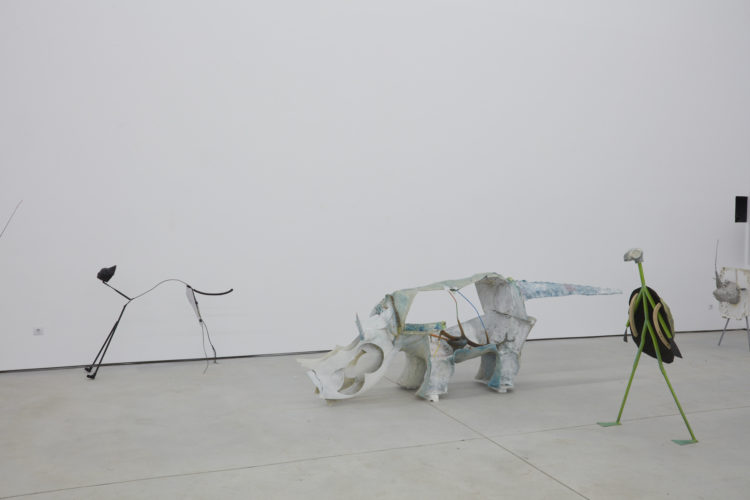
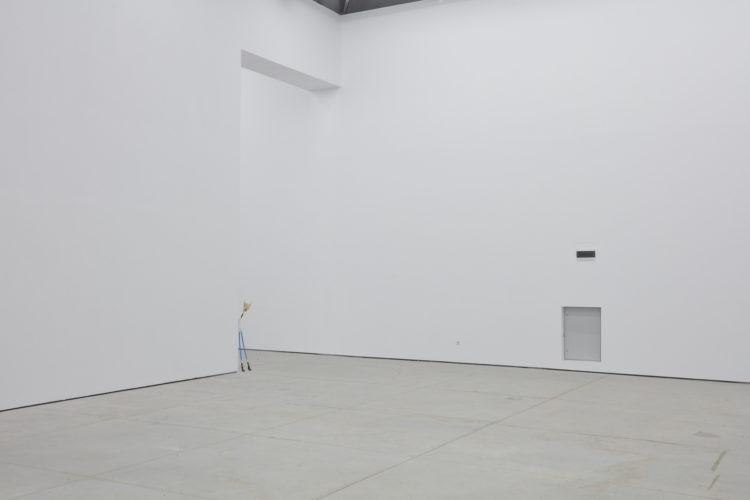
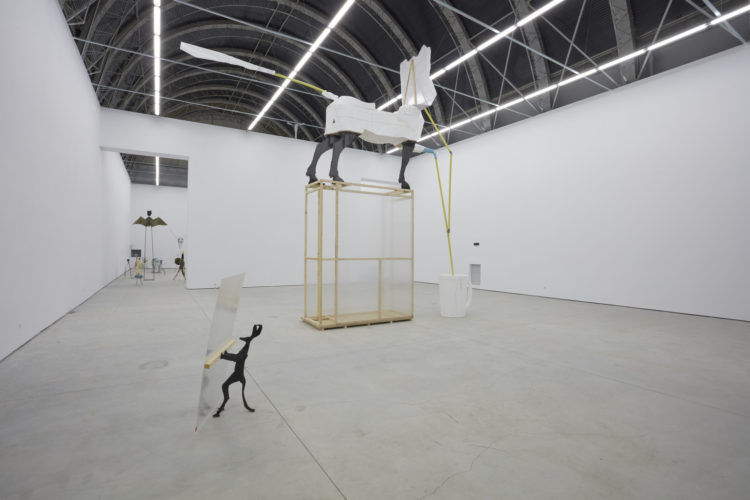
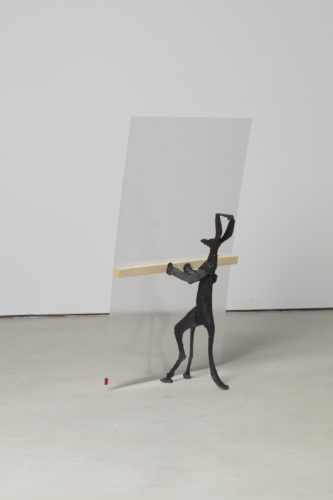
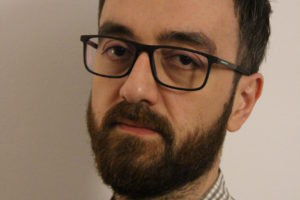
Comments are closed here.